Range & Distribution | ID & Biology | Hosts & Habitat | Impacts | Prevention & Control
Background
The giant African land snail (Lissachatina fulica, formerly Achatina fulica) was originally introduced to Hawaii in 1936 and Florida in 1966. Florida’s original eradication campaign took ten years and cost one million dollars. The snail was rediscovered in 2011. Eradication efforts are ongoing (2015).
Giant African land snails are eaten in many countries and sold as canned pet food for skinks, turtles, monitors, and small animals.
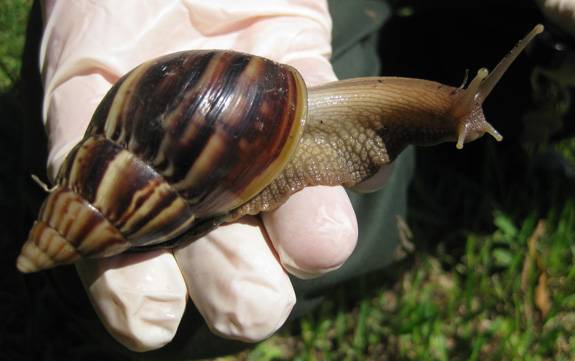
Range and Distribution
Giant African land snails are native to East Africa and found in Asia. In the USA, in Southern Florida and Hawaii, the snails are under quarantine. The USDA APHIS (Animal and Plant Health Inspection Service) has established additional regulated areas in Florida (June 2015). The snails are sold and raised as pets in other countries, including those of Europe. While not yet in New York, the giant African land snail, owing to the illegal pet trade, is prohibited in the state.
Identification and Biology
One of the largest terrestrial snails, full-grown adults can reach almost 8 inches (20 cm) long and 5 inches (13 cm) in diameter. Adult shells are brownish with darker brown lengthwise stripes, have seven to nine whorls including a swollen long body whorl, and covers at least half the length of the snail. Snails have female and male reproductive organs. One mating can result in multiple clutches of eggs over time. Rapid population increases are likely because each snail can produce 1,200 eggs per year.
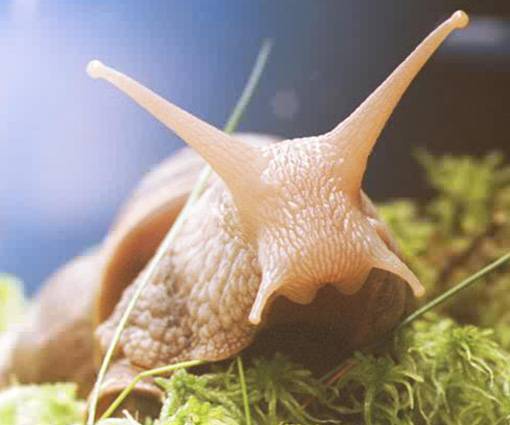
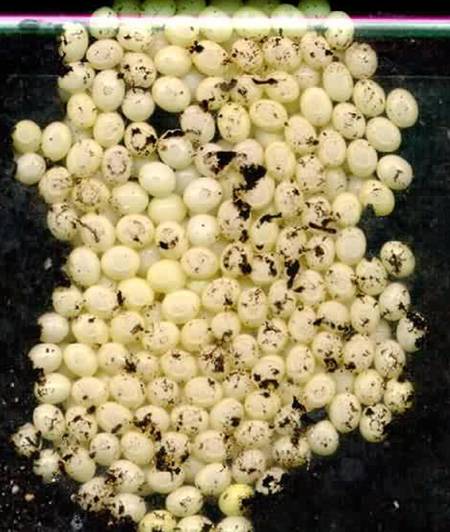
Hosts and Habitats
The snails are found in many plant habitats and are known to preferentially consume beans, peas, cucumbers, melons, and peanuts. Also at risk are ornamental plants, tree bark, and even the plaster, stucco, or paint on buildings.
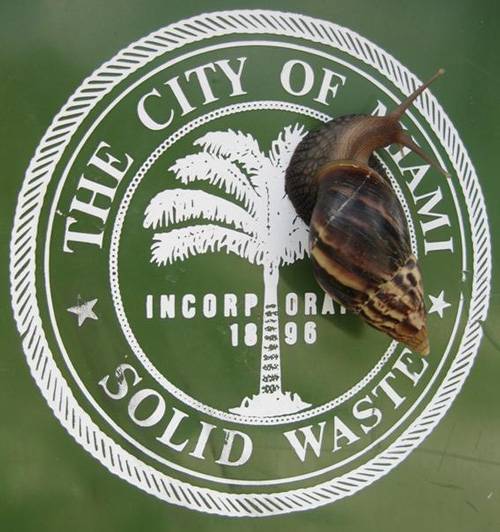
Impacts
Because of their large size, ability to consume over 500 different kinds of plants, and cause damage to plaster and stucco buildings, the giant African land snail is one of the most damaging snails in the world. The snails are also a potential risk to human health because they can carry a parasitic nematode that can cause meningitis.
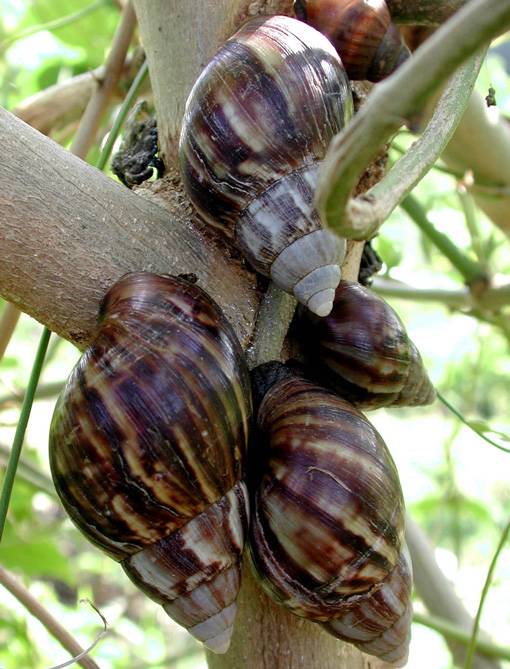
Prevention and Control
Giant African land snails are able to survive cold temperatures in a semi-hibernation state. They represent a potential threat to New York even though they thrive in tropical/subtropical areas. If a snail shell is larger than two inches (5-6 cm) it is most likely a type of giant snail. Do not handle with bare hands. Importation is prohibited and specimens will be confiscated by customs. Do not purchase as pets or as educational animals through foreign online dealers or local distributors. For safe removal, or if found outdoors or for sale, contact local New York Department of Environmental Conservation, Cornell Cooperative Extension, or USDA offices.



